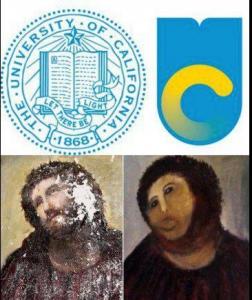The Year in Digital Humanities: 2012

In spite of apocalyptic predictions, 2013 is upon us. In honor of the new year, I present the (second annual) Year in Digital Humanities: the most notable stories in technology from 2012 and what it means for scholars in the Humanities.
Space missions have long been the subject for public consumption and entertainment, ever since the iconic footage of Neil Armstrong’s first steps on the moon. Armstrong sadly left us this year, but exploration of the solar system continues to grab public imagination as proven by NASA’s Curiosity rover. The car-sized rover touched down on Mars on August 6 and continued to accomplish a number of firsts on the Red Planet: the first streaming of a human voice from the surface of another planet, the first laser shot on Mars, taking its first Martial soil and rock samples, and even uncovering anancient stream bed. Oh, and it was the first foursquare check-in on another planet.
Back on Earth and among scientists, the biggest story of the year—of the decade? in decades?—was the possible discovery of the Higgs Boson, that “missing” particle that sparked the massive project over at CERN. Few of us outside the Physics department have the training to really understand why this thing is so important, but even fewer can deny that it is. That’s because in addition to the discovery itself, the marketing campaign that has surrounded this elusive little thing—from artists’ representations to talk-show circuits to award-winning books and miniseries—has grown into an accomplishment all its own.
2. Social media showcases some unexpected winners and losers.
Winners:
Barack Obama: President Obama scored two historically viral posts in 2012: His response to Clint Eastwood’s infamous“chair” speech (“This seat’s taken”) was the most RT’d tweet of the RNC, and his victory Facebook post (“Four more years”) was the most liked post ever with over 4 million likes.

Google+: In February, the Wall Street Journal reported that the average person spent 3.3 minutes on G+ compared to 7.5 hours on Facebook per month. The People’s Republic of China took advantage of lax G+ censorship and began posting off-topic comments on Barack Obama’s official election campaign pages. In April, G+ shut down its photo editing site Picnik, and during the month of June, it was reported that 30% of users who make a public post on Google+ never make a second one. Ouch.
Apple: Apple suffered badly from the fiasco surrounding its Maps app—including egregious inaccuracies. Samsung’s Salaxy S3 rivaled the iPhone 5 in both hype and sales.
KONY 2012: When it was released in March, the video receives more than 87 million online views. But after a wave ofcontroversy, the follow-up video is released and receives half a million views on Youtube within a week. It still doesn’t reach the top spot in the contest for the most watched video in Youtube history: That honor goes to PSY “Gangnam style” with 1 billion views and counting.
Shortly after University of California showcased its new logo, masses of outraged students and alumni rallied in protest. Nearly 55,000 people signed a petition saying “the logo was overly corporate, resembled—among other things—a fruit label and did not sufficiently reflect the university’s prestige." The redesign was lambasted in comments and memesthat circulated broadly on social media.
